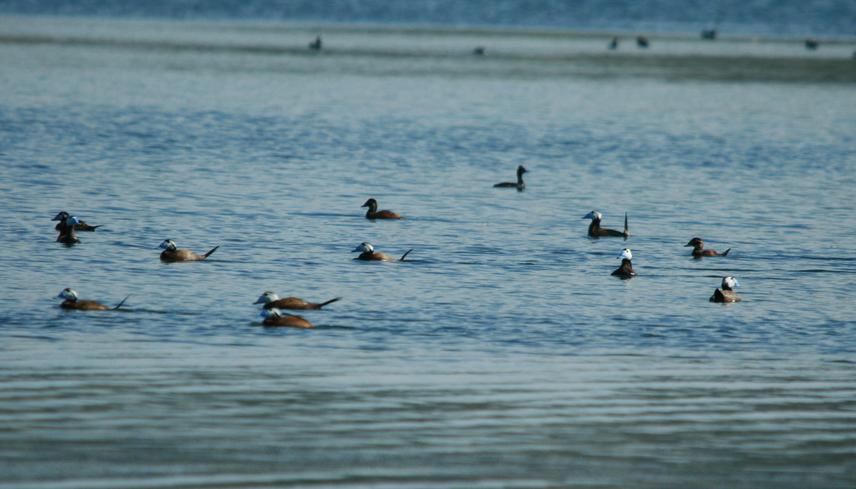Article featuring the project.
Foued Hamza
Other projects
Understanding ecological factors and processes affecting the distribution and abundance of species of conservation concern is vital step for developing successful management strategies and conservation. During the first grant from the Rufford foundation, the importance of Tunisian wetlands as wintering areas for migrating waterbirds has well advanced, but their role as breeding grounds for waterbirds species with unfavourable conservation status, like Ferruginous Duck (hereafter FD) Aythya nyroca, Marbled Teal (hereafter MT) Marmaronetta angustirostris and White-headed Duck (hereafter WHD) Oxyura leucocephala, remains poorly known. The FD is a partial migrant with a range spanning Europe, Asia and Africa. This species is currently listed as "Near Threatened" on the IUCN Red List (BirdLife International, 2022).

Flock of Oxyura leucocephala.
In Tunisia, this species has exceeded 21% (521 birds) of its known biogeographical population during the wintering count of 2020–2021 (Hamza et al unpublished data). The MT is classified as “Vulnerable” by IUCN. In Tunisia, this species is a resident breeder and winter visitor. The Tunisian wintering population of this species was estimated to 1,350 birds (Hamza et al unpublished data), which represent about 34% of the biogeographic population. The WHD have suffered from a rapid population decline, it is qualifying as Endangered species in the IUCN Red List. WHD is resident species throughout the year. The Tunisian population of this species is around 573 birds (Hamza et al unpublished data), which represent more than 90% of the biogeographic population. Numerous Tunisian wetlands are recognized as breeding sites for these species (Isenmann et al. 2005). Unfortunately, due to the lack of studies, almost nothing is known about the environmental factors shaping these abundance and dynamics of these threatened waterfowls. For conservation purposes, it is essential to identify the key factors determining the use of Tunisian wetland by these species during the breeding period.
Header: Flock of marbled duck in wetlands od Douz.